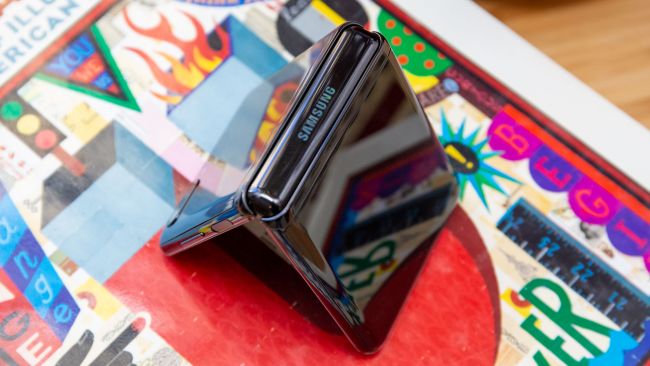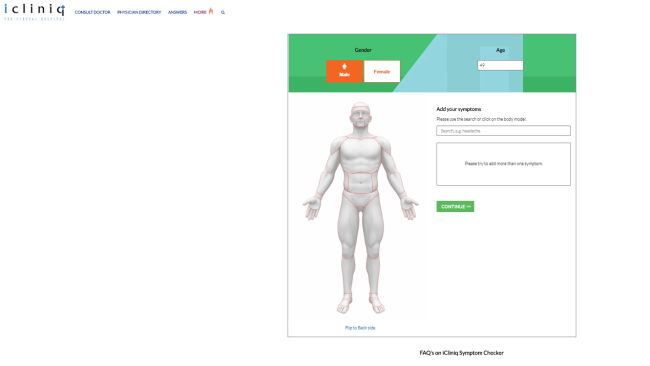Editor's Note: What immediately follows is a rundown of the latest changes and additions since this review was last updated.

AnchorFree's Hotspot Shield Premium is the commercial edition of the company's hugely popular ad-sponsored VPN service.
Paying to upgrade gets rid of the ads and gives you unlimited data transfer and full access to all of Hotspot Shield's locations and features.
That means you're able to choose from up to 70+ countries, a far larger network than you'll see with many competitors, and a massive improvement on the 27 available just a year ago.
There's app support for all the main platforms - Windows, Android, iOS, Mac - but as Hotspot Shield requires its own proprietary Catapult Hydra protocol, there's no way to set it up manually on routers or other platforms. You must use one of the apps.
You can at least use a bunch of your devices at once, as Hotspot Shield Premium supports up to 5 simultaneous connections. That's going to be enough for most users, although if you really need more, IPVanish supports 10, StrongVPN can handle 12, and Windscribe has no limits at all.
All servers are P2P-friendly, and with no bandwidth limits, you're able to browse, stream or download as much as you like.
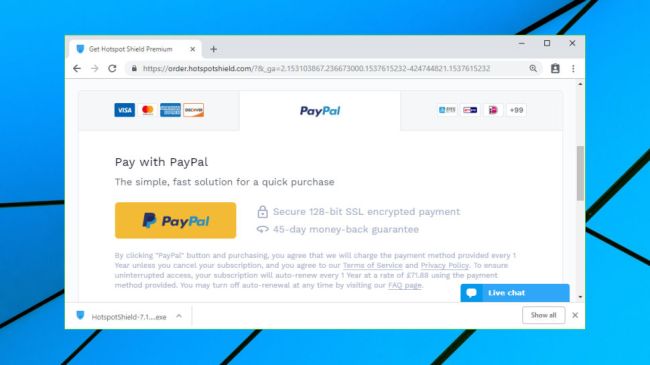
Plans and pricing
Hotspot Shield Premium's regular pricing is a little more expensive than most VPNs.
A monthly billing option costs $12.99, for example, at the high end of the industry standard $10-$13.
The old 6-month plan has disappeared, so your next option is a yearly plan for a chunky $9.99. Even opting for a 2-year plan only cuts the price to $8.99. Many quality competitors charge less than half the price.
Although we review based on standard prices, there are ways to get the service for less. Signing up for our exclusive deal can save you a considerable amount, cutting costs to an effective $5.99 a month for the 2-year plan, and introducing a 3-year plan for a monthly $2.99.
There's no support for paying by Bitcoin, but you can use a range of other methods, including cards, PayPal, and (for extra anonymity) gift cards from hundreds of companies.
Sign up for a Premium account and although you're asked for your payment details, you're not billed for the first 7 days. Cancel within that time and there's nothing to pay, and even if you hand over the cash, you're still protected by a generous 45-day money-back guarantee. (CyberGhost also offers 45 days, but most providers stop at 30, and Private Internet Access only gives you 7.)
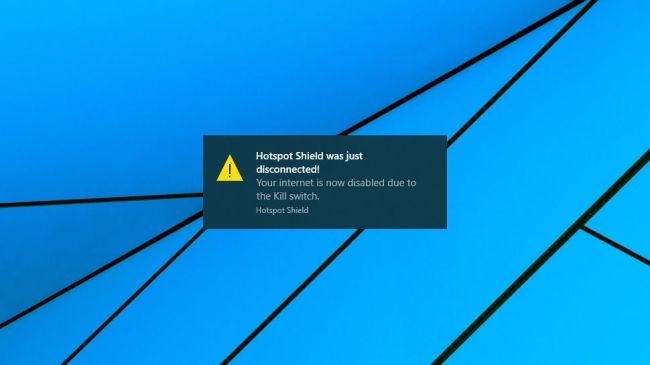
Privacy
Understanding a VPN's security usually starts by looking at its protocol support, encryption and authentication details. This can be hugely complicated, but just seeing that a service supports a secure protocol like OpenVPN can give you reassuring feedback about its safety.
Hotspot Shield is more difficult to assess, because it doesn't support OpenVPN, or IKEv2, or L2TP/ IPsec, or any of the other standard VPN protocols. Instead it uses its own proprietary Catapult Hydra technology.
This isn't as worrying as it might sound. Catapult Hydra's focus is on improving performance, and the encryption side of the protocol uses much the same standards as everyone else.
For example, the Hotspot Shield website reports hat Catapult Hydra is based on TLS (Transport Layer Security] 1.2, with AES-128 encryption, 2048-bit RSA certificates for server authentication and keys exchanged via Elliptic Curve Diffie-Hellman (ECDHE) for perfect forward secrecy (keys last for only one session, with new ones generated next time.) Which, for non-encryption geeks, is more than good enough to keep you safe.
One problem with proprietary technologies like Catapult Hydra is there's no easy way to see what else is going on. OpenVPN is open source and any developer can look at the code, figure out how it works, perhaps find problems or suggest improvements, something which isn't possible here.
That doesn't mean you must take Hotspot Shield's claims entirely on trust, though. The company points out that Catapult Hydra is used by 'the majority of large cybersecurity companies that offer VPN services from within their apps, such as McAfee, Bitdefender, Cheetah Mobile and many others.' In addition, 'carriers such as Telefonica and KDDI also use Catapult Hydra to provide VPN services and Wi-Fi security to their customers.'
As a result, though the code isn't publicly available, that doesn't mean its functionality hasn't been reviewed. These corporate customers need to understand Catapult Hydra to properly implement it themselves, and Hotspot Shield says the protocol has been 'evaluated by 3rd party security experts from more than 60% of the world’s largest security companies that use our SDK to provide VPN services to their users.'
Privacy isn't just about the low-level technicalities. Client implementation is also important, especially when it comes to blocking DNS and WebRTC leaks which might give away your real identity. Fortunately, testing Hotspot Shield's clients and browser attachments at IPLeak and DNSLeakTest didn't reveal any issues, with the service protecting us from snoopers at all times.
Your IP address could also leak if the VPN connection suddenly drops, at least in theory. Some of Hotspot Shield's apps include a kill switch to prevent this by shutting down your internet until the VPN is back up, but does this really work?
Some quick Windows tests got off to a good start. Even with the kill switch turned off, the client didn't leak our real IP address when we changed locations, and our IP address was exposed for typically no more than a couple of seconds if the connection dropped. When we turned the kill switch on, our IP address wasn't visible at all.
Digging deeper, we found the client opened multiple local TCP connections to manage the tunnel. If we forced these to close, we wondered, would that break the client? Nope: it didn't crash, leak our IP or even raise an alert, but just reopened the connections and continued as before. That ability to cope with unexpected events is a sign of smart engineering, and suggests the client will cope with oddball issues that might break other apps.
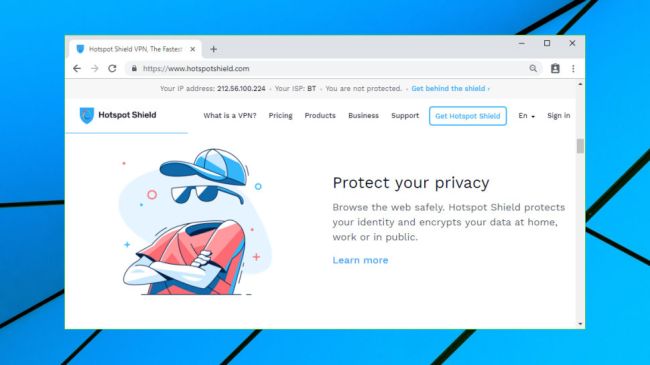
Logging
Hotspot Shield makes apparently definitive no-logging claims on its website. A support page, for instance, states that "We do not collect any personally identifiable information on Hotspot Shield. We do not collect, store, or share any permanent identifiers of users, including IP addresses. We do not keep any activity logs for any of our users, whether they are free or Premium."
The VPN Privacy Notice gets a little more specific, stating that 'When you initiate a VPN connection, we collect your IP address, immediately encrypt it, and delete it at the end of your VPN session... The IP address is not associated with your VPN browsing activity. This means that we are not able to share your VPN browsing activity with anyone - whether it’s an ad network or government agency - because we simply don’t store that information.'
While that sounds encouraging, it's not quite the full story. For example, the Privacy Policy also tells us that the service collects information about:
'how much bandwidth you use, and when and for how long you use our services... the browsers and AnchorFree apps you use to access our services... we may collect device identifiers, browser types, device types and settings, operating system versions, mobile, wireless, and other network information (such as internet service provider name, carrier name and signal strength)... the nature of the requests that you make to our servers (such as what is being requested, information about the device and app used to make the request, timestamps, and referring URLs)... we may collect your approximate location by calculating an imprecise latitude and longitude based on your IP address.'
It's good to hear that Hotspot Shield doesn't log enough information to link any internet action to your account (although we'd like to see an independent audit to confirm that), but this is still a little more logging than you might expect.
If you're looking for extra reassurance, though, AnchorFree's 2018 Transparency Report, is an interesting read. It details the requests it received in 2018 for information from governments and law enforcement agencies and how much user data it produced (that turns out to be 56, and none.)
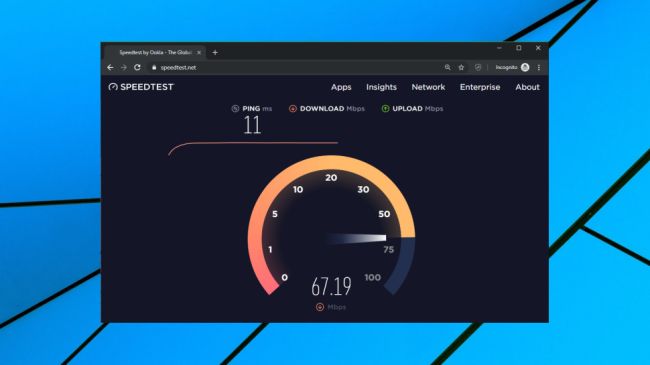
Performance
Hotspot Shield makes big claims about the performance of its Catapult Hydra protocol, but does it live up to the hype? We checked the service out with SpeedTest, TestMy and other websites to find out.
Connecting to our nearest UK location returned speeds of around 65 to 67Mbps on our 75Mbps fiber broadband test line. Some tests showed performance dropping as little as 1Mbps compared to non-VPN connections, one of the lowest overheads we've seen (the average is around 2.5-5Mbps.) Even if you've a relatively slow internet connection, that should ensure you see fractionally better performance than the competition.
Next, we used the same benchmarking websites to check US servers from a US location, using a very fast 475Mbs connection. Speeds dropped to around 230-290Mbps, but that's still a significant improvement on a lot of the competition (many struggle to reach 100Mbps, few ever exceed 200Mbps). Short-term tests can never tell you very much, but Hotspot Shield was unusually consistent, too, giving us better-than-average confidence in the accuracy of our results.
Long-distance checks aren't as useful as there are more factors which can influence performance, but as we've seen in previous reviews, Hotspot Shield also performed very well in these. UK connections to Europe and US servers delivered very similar results as our local UK servers, and even the farthest connections, like Vietnam, regularly managed more than 60Mbps.
These are stellar results, both for top speeds and consistency, especially for the most distant locations. If you plan to regularly connect to faraway servers, Hotspot Shield just might be one of the best VPNs around.

Netflix
Connecting to a VPN can help you bypass all kinds of website restrictions, from streaming sites which block content in specific countries, to countries such as China which block a host of popular sites.
Measuring a VPN's unblocking abilities is difficult as there are so many factors involved, but we try to get a feel for its effectiveness by checking how the service works with YouTube, BBC iPlayer and Netflix.
Hotspot Shield gave us speedy access to geoblocked YouTube clips, without any hassle at all. That's good news, although also no great surprise, as YouTube is relatively easy to unblock.
We had no success with BBC iPlayer, unfortunately, which displayed its 'not available in your location' warning and refused to stream content. That's disappointing, especially as it worked very well for our last review. Unblocking success rates can vary over time, though, and Hotspot Shield told us that 'issues with BBC are a known issue that we are currently trying to resolve', so maybe it'll be working again by the time you read this.
Netflix goes to great efforts to block VPNs and is normally the most difficult streaming site to access. But not this time, as Hotspot Shield allowed us to view US and UK Netflix without difficulty.
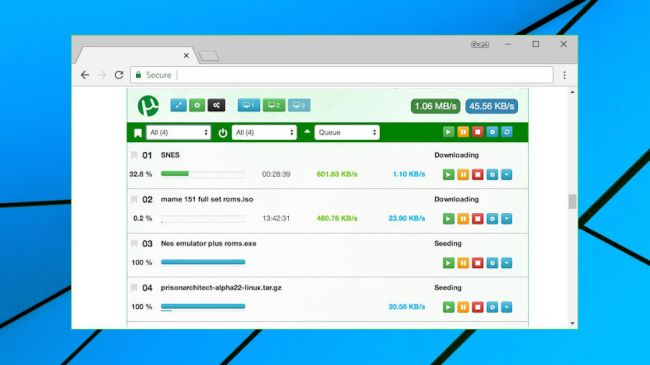
Torrents
Hotspot Shield doesn't exactly highlight its P2P policy. There's no mention of this on the front page of the website, most of its feature lists or the opening page of its FAQs.
Dig a little deeper, though, and you'll discover some good news. The service fully supports P2P on all servers, so once you've connected with any of the clients (Windows, Mac, Android or iOS), you're ready to start downloading.
The support site has a few simple guides for beginners, with advice on why you might want to use a VPN for torrenting, and pointers on How To Download Torrents Anonymously.
Whatever method you're using, Hotspot Shield doesn't have any bandwidth limits or restrictions, so you should be able to use the service as much as you like.

Client setup
Sign up for Hotspot Shield and you're redirected to your web console, where you'll find download links for Windows, Mac, Android and iOS clients, along with the Chrome extension.
If you're hoping to find instructions for setting up connections manually, on routers or other platforms, you're going to be disappointed. Hotspot Shield used to support standard protocols such as OpenVPN, but you're now only able to use its proprietary 'Catapult Hydra' technology. The company claims this is worthwhile, quoting speed increases of up to 2.4x over long distance connections, but as nothing else supports Catapult Hydra, you can only use the service with Hotspot Shield's own apps and clients.
These apps and clients are, at least, easy to install and use. The Windows client set itself up much like any other application, while the mobile apps and Chrome extension are available in their relevant app stores. Log in with the username and password you created during signup and you're ready to explore the service.
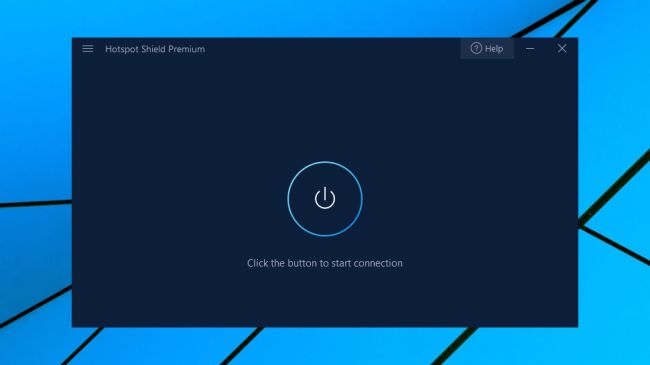
Windows client
Most VPN apps are easy to use, but Hotspot Shield's Windows client takes this simplicity to a new level. The interface is a dark, almost empty panel; the only feature is a large On/ Off button in its center; and just in case you've not got it yet, a caption underneath says, 'Click the button to start connection.'
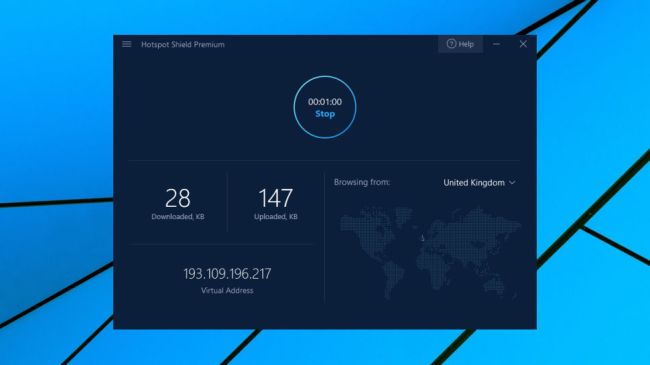
Follow the instructions and you're connected to the service at a very high speed. We connected from UK to Vietnam in an average of 2-3 seconds, for instance. Most VPNs take at least 5 seconds to make a local connection, some require 10-15.
Once you are connected, the On/ Off button shrinks in size and floats to the top of the panel, a map appears underneath showing your new virtual location and IP address, and a couple of figures keep you up-to-date on the total amount of data you've uploaded and downloaded. It all looks great and is very well presented.
Clicking the current location displays a list of other countries you can choose from. You now have the option to choose locations within a few countries, a welcome improvement since our last review, but there's still no Favorites system or 'Recently used' list to speed up reconnecting.
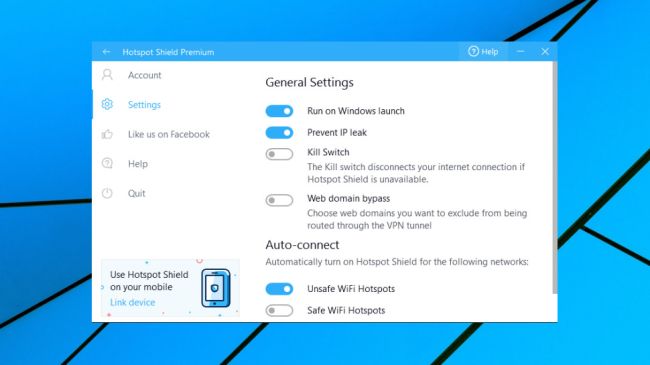
Hotspot Shield's settings dialog is equally simple, with very few options. It still covers the bare essentials, though, with switches to run the client when Windows starts, prevent IP leaks and enable a kill switch to block internet access if the VPN drops.
There's one welcome bonus feature in the client's ability to automatically connect to Hotspot Shield when you access unsafe wifi hotspots, safe hotspots or all networks. That option isn't available nearly as often as we'd like, and it's good to see it here.
The 'Web domain bypass' feature is a recent addition, and enables choosing domains that won't be routed through the VPN, handy for websites which don't work as usual when you appear to be in another location. If we connect from the UK to a US server, for instance, we wouldn't be able to view BBC iPlayer. Add it to the 'Web domain bypass' list and iPlayer should work as usual, whatever our VPN location.
The client's Help option is another plus. Instead of simply opening your browser at the Hotspot Shield support site, it displays key FAQs within the client interface (Can't Connect, Can Connect But Can't Browse, and so on.) You can get step-by-step advice in a click or two, and if that doesn't help, a Contact button opens your browser at Hotspot Shield support's Live Chat page for some professional assistance.
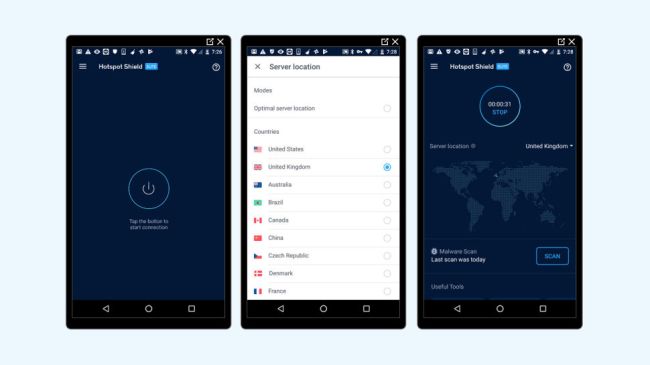
Android app
The Hotspot Shield Android app has much the same clean and straightforward interface as its Windows cousin. Open the app, click Connect, and your current location is displayed on a small map.
Tap the location name (or the map) and you'll notice a useful extra. While the Windows client always reconnects initially to whatever server you were using last, the Android app can be set up to connect to the fastest server for your current location.
Scrolling down the screen reveals another handy option in the ability to automatically protect the traffic of specific apps. Add your required apps to the list and Hotspot Shield will automatically connect whenever they need to go online.
A Settings panel also follows much the same pattern as the Windows client, with options to start when your device boots, or to automatically turn on Hotspot Shield for particular network types (secured, unsecured, mobile.) There's no integrated kill switch setting, unfortunately, but you do get a battery-saving extra in the ability to turn off the VPN when your device is sleeping.
We're glad to see the Android app also has embedded help documents from the Hotspot Shield site, allowing you to get guidance on common issues from within its interface, rather than simply opening a support website and leaving you to find the relevant articles on your own.
There's not a lot of power or configurability here, then, but the Android app is certainly easy to use, and its ability to automatically choose the best server is a welcome advantage over the Windows client.

iOS app
Hotspot Shield's iOS app is another close interface match for the other clients, with little more than a connect button, a world map and list of locations, and a very few settings.
As usual, the iOS version has a touch more visual style than the desktop competition. Once you've hit the Connect button, the app doesn't just highlight your current location on the map, it also leaves it pulsing, gently. That makes it easier to spot your location at a glance, and conveniently, it looks great, too.
What you don't get is much in the way of functionality. The 'optimal server' connection option you get with Android isn't available here, and you're left to select a specific country as your default location.
The Settings panel is sparse, too, with no autostart or autoconnect options, and no kill switch. The only option you get is an 'Insecure connections' setting which warns you if you're connecting to an insecure network, perhaps prompting you to connect manually. (Even that is turned off by default.)
Overall, the iOS app looks good and is straightforward to operate, but it's hard to see why it doesn't have an option to connect to the best server for your location, especially as Hotspot Shield has already demonstrated it can do this with the Android app.
We browsed the app's Version History page, looking for improvements we might have missed, but without success. There's vague talk of 'improved connection quality' and general optimizations, but Hotspot Shield hasn't added any significant new features in the past few months.
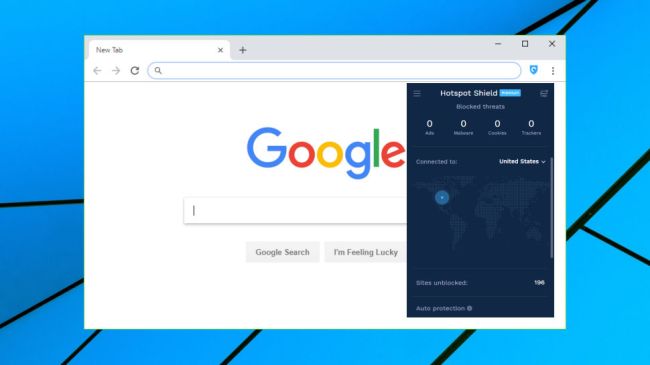
Browser extensions
Many VPNs offer browser extensions, but they're usually very basic, stripped-back tools with little more functionality than a Location list and a Connect button. That's not the case with Hotspot Shield, though - its Chrome extension is stuffed with features, and more powerful in some ways than the desktop and mobile apps.
The opening interface gives no indication of this, as it looks much like the other clients: a mostly empty dark panel with a Connect button in the middle, and barely anything else. Point, click, and you're connected.
It's a near instant connection, too, because the browser extension is a simple proxy system which protects your browser traffic only. That won't work in every situation, but if you're mostly interested in unblocking websites, it could serve you very well.
The extension gets more interesting when you tap the Configuration button, top right. For example, you're finally able to set a default server which you'd like Hotspot Shield to access when you first connect, or have it automatically connect to the nearest server. There's also a problem, in you only get access to a relatively few servers - Canada, France, Germany, India, Netherlands, Russia, Singapore, United Kingdom, United States - but the extra control is still a welcome plus.
There are a bunch of privacy extras, starting with ad, cookie, tracker, malware and WebRTC blockers, along with a handy option to ignore any resources you're accessing which are hosted within your local network.
Perhaps the best additions are the Auto Protect and Bypass lists, at least once you've found them (they're in Chrome's Hotspot Shield Settings page rather than the extension console). Add websites to the first and Hotspot Shield will automatically turn itself on whenever you try to access them, convenient for instance if you need the VPN to use them in full. Add websites to the Bypass list and Hotspot Shield will direct them through your regular connection, rather than the tunnel, handy for sites which don't work with a VPN, or which need to see your real location (a streaming platform which is only available in your country).
This isn't quite as powerful as it looks, initially. The ad blocker isn't as capable as the market leaders, for instance, and doesn't have any settings or options to customize how it works. Still, overall it works very well, and the Chrome extension is better than most of the proxy competition.
Although it's barely advertised on the website, Hotspot Shield also has a Firefox extension. This looks and works in almost exactly the same way as the Chrome extension, with just one minor omission (it doesn't include an optional Sword Mode for feeding web trackers fake browsing information.) Otherwise it's just as capable and easy to use as the Chrome version, and is a welcome addition to the Hotspot Shield lineup.

Support
If Hotspot Shield isn't working for you, the various apps give you instant access to advice on common issues by embedding documents from the website. As usual, if your issue is more complex, you can head off to the support website for more in-depth guidance.
A web-based Support Center organizes its articles by platform, as well as categories like Payments and Subscriptions, Manage Account and Common Issues. There is some useful information on the website that you won't always get elsewhere (release notes of all the latest apps, for instance), and the company has updated many articles since our last review, but they still can't compare with the depth of web guidance you'll get from providers like ExpressVPN.
If you can't find an answer in the knowledgebase, there are multiple pages on the Hotspot Shield site which claim it offers 24/7 chat support for Premium users, but this is much more difficult to access than we expected.
We couldn't find a chat option on the website, for instance. The best we could do was fill in a web form.
The problems continue with the apps. Choose Help in the Android app, select an article and click the Contact button, and a web form opens where you can enter the details to raise a support ticket. But do this in the Windows client, and it tries to take you to a chat page.
We say 'try' because the chat page refused to load on our default Chrome browser, but when we tried loading the same link into Microsoft Edge, the chat window quickly appeared, reported that we were first in the queue, and we were talking to a friendly and knowledgeable agent in under a minute.
There is some quality support here, then, but it can take more effort to locate than we usually see.
Final verdict
Hotspot Shield has its issues - basic apps, no OpenVPN, a little logging - but if raw speed is your top priority, its turbo-charged performance could justify signing up all on its own. Take the 7-day free trial and see how it works for you.








































